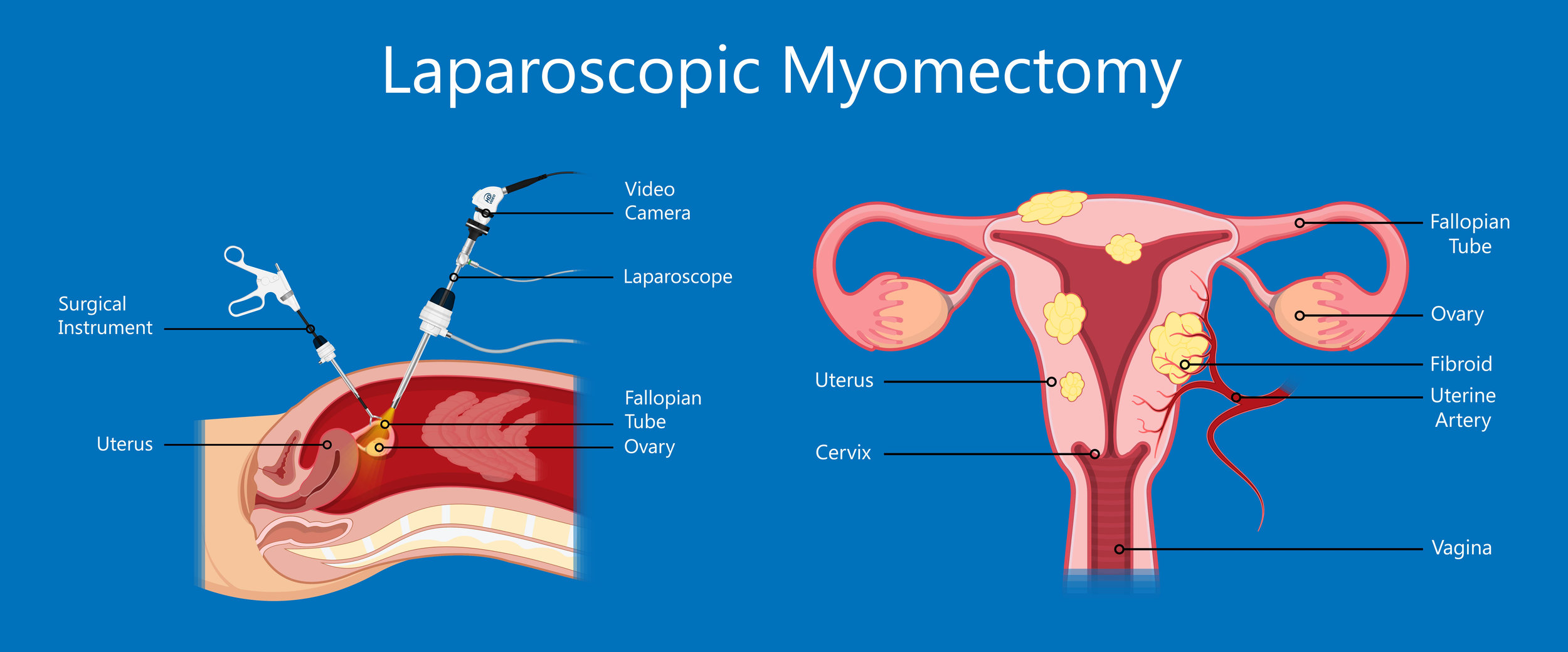Hospitals Available with this Myomectomy (Fibroid Removal) Treatment





Department: Gynaecology
Estimated Cost : $5,000 - $15,000
A myomectomy is a surgical procedure performed to remove uterine fibroids while preserving the uterus. Uterine fibroids are non-cancerous growths that develop in the muscular wall of the uterus, causing symptoms such as heavy menstrual bleeding, pelvic pain, frequent urination, and infertility. Myomectomy offers a solution for women who wish to keep their uterus and retain their fertility.
This surgery can be performed through various approaches, including laparoscopic (minimally invasive), traditional open surgery, or robotic-assisted surgery. The choice of method depends on the size, number, and location of the fibroids, as well as the patient's health and fertility goals.
1. Laparoscopic Myomectomy (Minimally Invasive)
Laparoscopic myomectomy involves making small incisions in the abdomen through which a camera and specialized instruments are inserted to remove the fibroids. This method is often preferred for its many advantages:
Laparoscopic myomectomy is suitable for women with smaller fibroids or fibroids located in accessible areas of the uterus.
2. Traditional Myomectomy (Open Surgery)
Traditional myomectomy involves making a larger incision in the abdomen to access and remove the fibroids. This method may be recommended in the following situations:
Though the incision is larger, traditional myomectomy may be necessary for more complex fibroid cases where laparoscopic surgery is not feasible.
3. Robotic-Assisted Myomectomy
Robotic-assisted myomectomy is a minimally invasive procedure in which a surgeon uses a robotic system to assist with the surgery. This approach offers:
This approach is beneficial for patients who need more advanced surgical techniques but prefer the minimally invasive benefits.
Minimally Invasive Options: Laparoscopic and robotic-assisted surgeries offer quicker recovery and fewer complications.
Uterine fibroids are often symptomless, but when they occur, they can cause:
If you are experiencing symptoms related to uterine fibroids, myomectomy may be the solution you need. Our expert gynecologists are ready to provide personalized, safe, and affordable treatment options. Contact us today to schedule your consultation and take the first step toward a healthier future.
1. What is a myomectomy?
A myomectomy is a surgical procedure to remove uterine fibroids while preserving the uterus. It can be performed through various methods, including laparoscopic, traditional open surgery, or robotic-assisted surgery.
2. What are the benefits of myomectomy?
The main benefits of myomectomy are symptom relief (such as heavy bleeding and pelvic pain), preservation of fertility, and improved quality of life.
3. What is the recovery time after myomectomy?
Recovery time depends on the type of surgery. Laparoscopic myomectomy typically requires 2-4 weeks of recovery, while traditional surgery may take 6-8 weeks.
4. Can I get pregnant after myomectomy?
Yes, myomectomy preserves the uterus, so most women can still become pregnant after the procedure. However, the success of pregnancy depends on the size and location of the fibroids.
5. How long do the results of a myomectomy last?
Fibroids may return over time, but many women experience long-lasting relief from symptoms. Your gynecologist will provide guidance on managing your condition post-surgery.
6. What are the risks of myomectomy?
Risks include infection, excessive bleeding, injury to surrounding organs, and complications related to anesthesia. However, these risks are minimized with experienced care.
7. Is laparoscopic myomectomy always possible?
Laparoscopic myomectomy is suitable for smaller or less complicated fibroids. In cases of large or numerous fibroids, traditional surgery may be necessary.
8. Can myomectomy be performed on large fibroids?
Yes, large fibroids can be removed, but traditional open surgery may be required if the fibroids are too large or numerous for laparoscopic surgery.
9. How much does myomectomy cost?
The cost of myomectomy varies, depending on factors such as the type of surgery, clinic, and location. On average, the cost ranges from $5,000 to $15,000 per procedure.
10. Are there alternatives to myomectomy?
Alternatives to myomectomy include medications, non-invasive procedures like uterine artery embolization (UAE), and hysterectomy (removal of the uterus). Your doctor will help you explore the best options for your situation.
@2025 Healtour Solutions Pvt Ltd. All Rights Reserved.